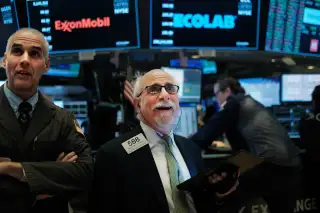Stocks Are More Expensive Than Ever According to One Popular Measure. Here's What That Means for Investors

Sales are the new earnings when it comes to evaluating stocks, and that could be a danger sign.
The price-to-sales ratio on the Standard & Poor’s 500 recently hit 2.41, the highest-ever level. Apart from a spike to around 2 in the late 1990s, the price-to-sales ratio for the index has traded between 0.8 and 1.9 for 25 years, according to Yardeni Research.
What's more, some of the technology companies in the index, such as graphics-chip maker Nvidia, are trading at 15 times the value of their annual sales. Think about that for a second: once upon a time, bargain-hunting “value” investors would balk at paying 15-times a company’s net earnings, never mind sales. It’s almost as if investors these days are so eager to buy stocks like Nvidia that all they see is potential growth.
The last time investors paid even close to these extravagant sums for S&P 500 sales was back in the year 2000. Beside the phrase “dangerously overvalued stock market” in pretty much every finance textbook, you’ll find a chart of the S&P 500 in the year 2000.
Some Wall Street strategists, including one team at Bank of America Global Research, predict that 2020 will see a similar “Icarus” pattern to the year 2000 – with the upward spiral in valuations bringing the stock market so close to the sun that it eventually goes down in flames.
“Insane indeed,” said Lorenzo Di Mattia, manager of hedge fund Sibilla Global Fund, one of the skeptics who sees echoes of 2000, when asked about valuations.
Bulls Point to Fat Margins
The bulls say that long-term changes in corporate-earnings trends and the latest decline in interest rates make it too early to sound the Icarus alarm.
The expansion of the price-to-sales ratio is a common-sense response to the steepening of profit margins, says Jim Paulsen, chief investment strategist at money manager The Leuthold Group. The average net profit margin on the S&P 500 in the 1990s was around 6%, according to Paulsen. That has nearly doubled in the current recovery, to around 10%.
If twice as much of each sales dollar goes to the corporations’ bottom lines, then it makes sense that shareholders would value those sales at roughly double historical levels, said Paulsen.
Is the increase in profit margins a permanent shift? Automation, the decline of unions and anemic wage growth make this trend likely to continue, say economists.
Another explanation for the surge in stocks, which has seen giants such as Apple and Microsoft double or near-double in value in the last 18 months, is the Federal Reserve’s monetary policy.
“Maybe Microsoft’s growth rate since October 2017 hasn’t changed a lot, but you just took the long-term cost of capital in this country and dropped it in half,” says Paulsen. In other words, low interest rates have been saving companies with debt loads a bundle, boosting profits and making it easier to expand even without skyrocketing sales growth.
Time for Caution
Eric Marshall, president of Dallas money manager Hodges Capital, occupies the middle ground in the argument. He acknowledges the accounting logic of the higher profit margins, and agrees that there’s been a sea change in interest rates. But the rise in the price-to-sales ratio also reflects investors’ voracious appetite for fast-growing companies after years of relatively “stagnant” economic activity, he says. This excitement about sales growth is dangerous even if it's not quite at hysteria levels, he argues.
“You can’t go out and spend sales, you can’t pay dividends with sales, you can’t reinvest sales,” says Marshall. “Not all sales are created equal.”
The price-to-earnings ratio on the S&P 500 is still far below 2000 levels. But the price-to-sales record may be remembered as an early indicator of an over-inflated stock market.
More From Money:
A Beginner's Guide to Weathering the Next Recession
These Are the 50 Best Mutual Funds for 2020
These Are the 50 Best ETFs for 2020